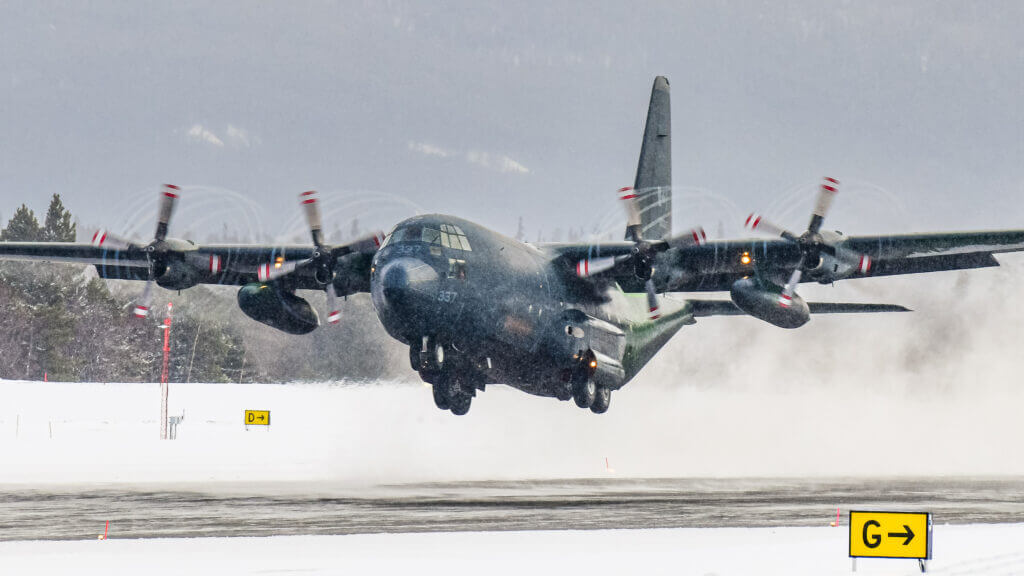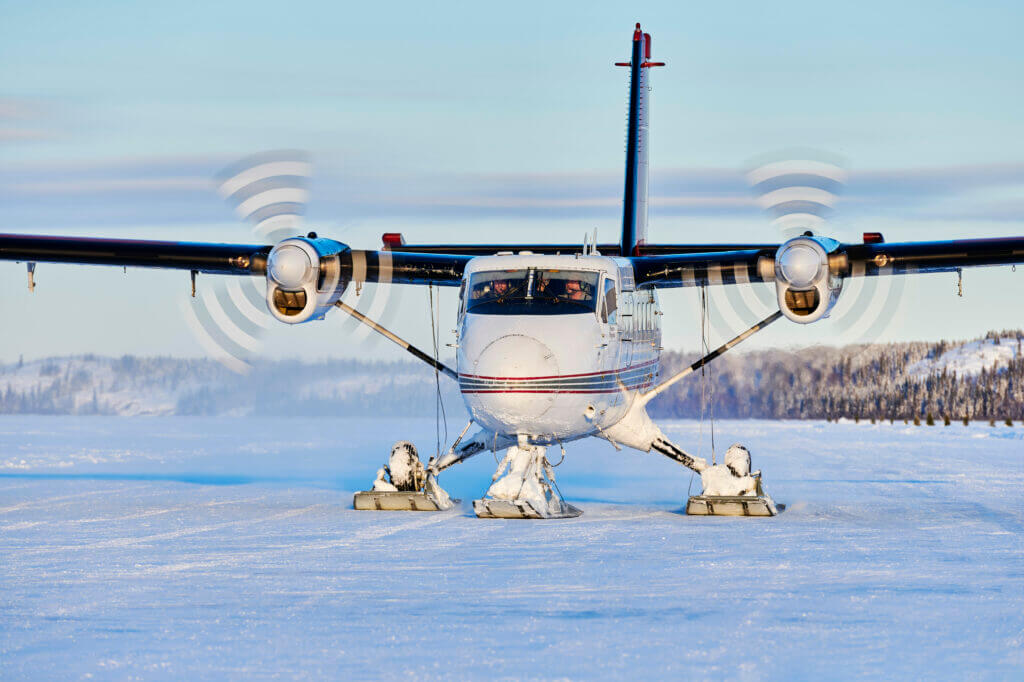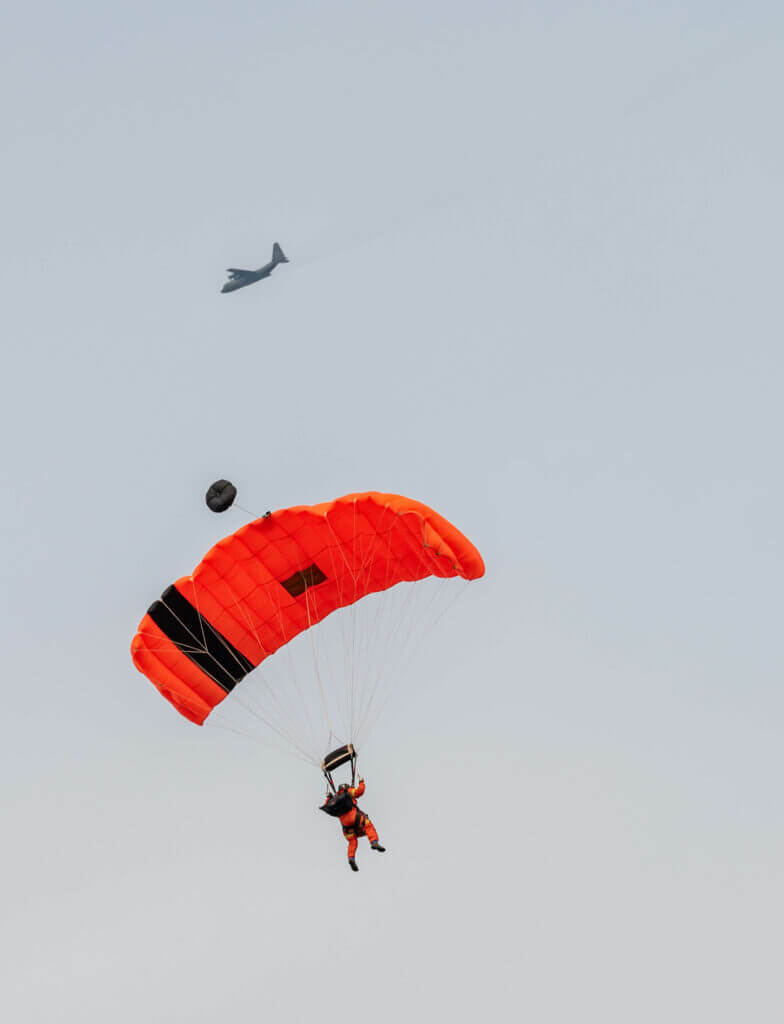Estimated reading time 9 minutes, 30 seconds.

Two crew members and eight passengers of an Air Tindi charter could have spent a very cold and uncomfortable night near the Nunavut-Northwest Territories border if not for the training and skill of three Royal Canadian Air Force (RCAF) search –and rescue (SAR) technicians and four members of the Diavik Diamond Mine emergency response team.
The three SAR techs were part of a CC-130H aircrew from 435 Transport and Rescue Squadron at 17 Wing Winnipeg, Man., that responded to a call for assistance on the afternoon of Dec. 27, after a DHC-6 Twin Otter 300 operated by Air Tindi struck terrain about 20 kilometres from the Diavik mine.
The charter flight had departed from Yellowknife, N.W.T., earlier that day for Lac De Gras, a lake near the territorial border about 300 kilometres away. The charter was in support of winter road construction in the area.
The cause of the accident is still under investigation.
435 Squadron currently has a portion of its aircrews and CC-130H Hercules at 19 Wing Comox, B.C., supporting search and rescue from 442 Transport and Rescue Squadron while the RCAF finalizes operational test and evaluation of the new CC-295 Kingfisher fixed-wing aircraft. But the squadron had a primary SAR crew and aircraft on standby over the holiday.
The call from the Joint Rescue Coordination Centre (JRCC) at 8 Wing Trenton, Ont., came in the early afternoon, said Captain Jason Shaw, who would serve as the aircraft commander. Alerted by an activated ELT beacon, the centre had contacted the Twin Otter crew and had detailed information about the location of the aircraft and the condition of all on board – including the extent of some of the injuries.
After initial planning with the JRCC, Shaw and the rest of the aircrew and support staff began preparing the Herc, loading operational equipment and additional fuel as they finalized their flight plan for the three-and-a-half-hour transit from Winnipeg.
On route, Shaw and Sgt Vincent Benoit, the SAR technician team lead, had developed some options for inserting three SAR techs onto the crash site. But once they arrived overhead, “it became apparent the weather was going to be a challenge for us,” said Shaw. “There were low layers of cloud, low visibility, and gusting snow and high winds.”

Moreover, the sun had set and they were facing a parachute jump in the dark.
The CC-130H ascended a few thousand feet and began releasing flares as it circled to illuminate the surrounding area, a means for the crew to survey for potential obstacles — high terrain or otherwise — and to get a look at the crash site.
After establishing a visual picture of the larger area, the CC-130H then descended over the aircraft to allow the SAR techs to assess the Twin Otter and the likely landing area before finalizing their jump plan.
SAR techs require at least 1,500 feet of visibility to parachute to a crash site, and when the Hercules arrived above the distressed aircraft, the strong, gusting winds and low ceiling made even flying a pattern around the site difficult, said Shaw. “It was definitely challenging.”
By the time the crew had completed its initial assessment, the cloud cover had risen, and visibility had improved enough to consider the jump, said Benoit. “It looked like we might have a small window to do that.”
Parachuting under such adverse conditions is a collective decision. While the JRCC may task the team to assess a situation, the final decision belongs to the aircrew. And circling above the Twin Otter, it quickly became apparent that the wind speed was well above the SAR tech’ training limit. Knowing there were 10 people on the ground who needed assistance was a factor, Benoit acknowledged, but they decided to jump despite the weather once they deemed it safe.
Following a procedure SAR aircrews train for repeatedly, the Hercules climbed a few thousand feet to release more illumination flares, and then descended to about 2,000 feet as the SAR techs exited from the ramp. The CC-130H pilots then ascended again to drop additional flares to light the techs’ descent — a safe and “uneventful” drop despite the buffeting winds to an area close to the Air Tindi aircraft, said Benoit.
The Twin Otter had sustained significant damage on landing, but was still in good shape to provide a shelter. The SAR techs found six of the passengers in a small survival tent, some with minor ailments, and four in the aircraft, two in more critical condition being attended by two more with minor injuries.
After assessing the scene, Benoit called for a drop of emergency equipment — a toboggan, tents, heaters, stove, food, sleeping bags, and warming clothing, including boots. The Hercules crew dropped three bundles to the site and remained overhead for almost four hours before returning to Winnipeg via a fuel stop in Edmonton.
Benoit could not disclose the exact nature of the injuries, but said all Twin Otter crew and passengers improved throughout the night once they were under warmer shelters.
As the equipment bundles were dropping, four members of the Diavik mine emergency response team arrived on two snowmobiles and immediately began helping assemble tents and move the injured.

“I was quite surprised in that blizzard night to see two snowmobiles showing up,” said Benoit. “They were really competent and tough people. They were a huge assistance throughout the night.”
Benoit maintained radio contact with the JRCC in two-hour windows, providing patient updates and details on a possible extraction. Doing anything more than night proved impossible due to the weather, but the morning offered blue sky and no wind — “like nothing had happened overnight.”
At 10:30, three Airbus AS350 B2 (AStar) helicopters arrived at the crash site and, in two waves, airlifted all passengers and SAR techs to the mine, about 20 kilometres north, where they were met by an Air Tindi Dash 7 Combi that flew them to Yellowknife.
“We were pretty proud of the outcome, of achieving that mission,” said Benoit. “We train hard for those types of missions.”









Great job by all!
If there is a reason need to express pride in the Canadian Forces, SAR Crews are all that is needed. Thank God and the SAR Crews for a happy ending.
SAR an RCAF way of life